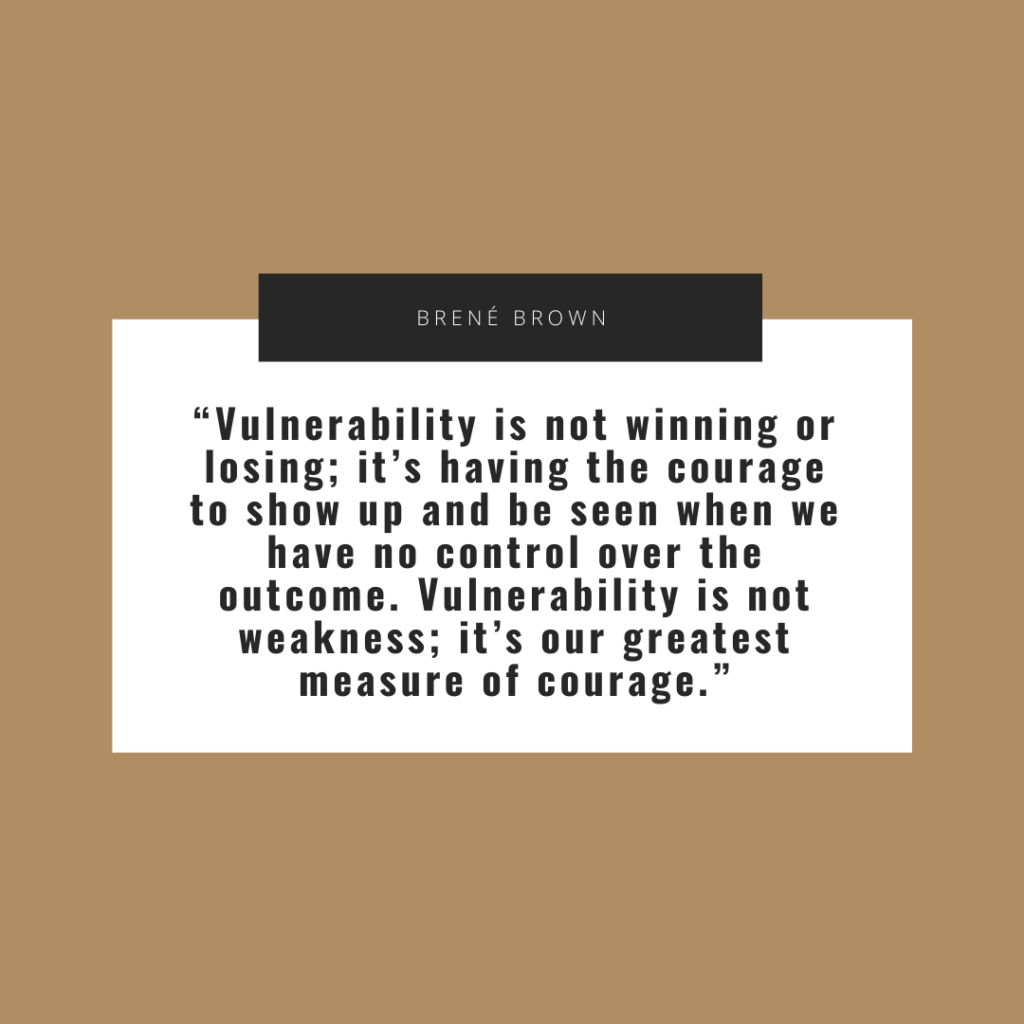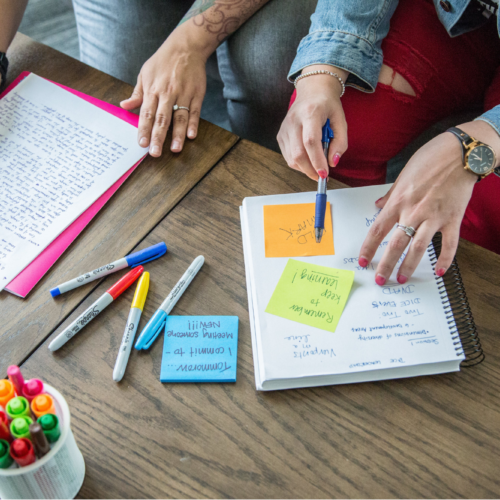After what feels like a decade but was really only six months, I’ve learned a few things about teaching and learning online. In this post, I’ll share those crucial lessons with you!

After a semester and a half of distance learning, I’ve learned a few lessons. Some easily learned and some learned through failure. I hope your journey with distance learning, or perhaps hybrid learning, is continually improving and smoothing out. If you were a master from the beginning, kudos to you! As tech-savvy, or perhaps tech-adequate, as I credit myself, and even as experienced with curriculum development and teaching as I am, online learning was hard for me. If you find yourself in the same boat, struggling against a seemingly ever-changing tide, let’s navigate these waters together! The lessons discussed below are my guiding lights and navigational points.
In March of 2020, education and school as we knew it changed. Out of necessity, given the situation, it went “distance” and fully online. And no one was prepared. Given that it was in the middle of the spring semester, the concern at my school, and at most others in the state of California, became student well-being, but because of distance learning, there was little left within the control of schools and teachers. What was left in our control: teaching and grading.
In my area, the response was diverse. Some districts made attending virtual classes optional, any work or attendance could only help a student. Similarly, any absence or missing work would have no effect; the now infamous “do no harm” philosophy.
While some schools in my area were fairly public with this stance of “do no harm,” and “voluntary” attendance, my school held a slightly different standard. After a few days for teachers to plan and transition to online learning, students were expected to show up via Zoom at the designated time, they were encouraged and even harangued to complete the work. We still held the “do no harm” philosophy, a student’s grade was stagnant or improving–nothing at this point could lower a student’s grade.
From these few weeks online, a few lessons were learned both by myself and my students. The lesson that stood out the most was one I intrinsically knew but hadn’t voice aloud. As my student said,
“I didn’t fully recognize how much work teachers ask us to do is completely unnecessary.”
By no means was the student showing disrespect; I asked for reflections on the semester in the last few days. I wanted to know, if we have to continue this way in August, what did we learn? When the student said this to me and to the entire class, I literally paused. All the other students in the Zoom nodded their heads, the few who were unmuted chuckled and “mhmmed.”
“That’s true. So true,” I said after a pause. “I wonder if we, as teachers, feel like we need to keep you busy all of the time… and so we don’t always consider whether every assignment we give really matters or helps…”
The students and I continued to have a conversation about what we’d learned from the long-but-short seeming weeks spent online. While there were other takeaways to be sure, this, the idea of remembering to hone our assignments to the essential, remained forefront in my mind as a teacher.
Throughout the summer, I continued to consider how I could transform the curriculum to fit a purely online learning environment. I knew the main goal:
remove the excess, focus on the essential.
Come August, we were still online. While there were conversations and statements made by the district that “we could be back at any time,” it was fairly clear from survey results that the parents of our students would not return in force until circumstances improved drastically.
So, how do we provide quality instruction with less face-to-face time, with varied circumstances and needs, which were more prevalent and inequitable than ever? Quite honestly, in terms of curriculum, English may be a relatively easy subject to transition, in comparison to other areas, so in many regards the shift wasn’t too difficult. I needed to find ways to make the curriculum accessible to students, especially those who struggled, regardless of the reason (WiFi capability, environment, learning needs, you name it).
In working with my English department, we decided to narrow our course offerings. Rather than offer different sections of English, we offered the same sections, so we could plan together and share the workload. We then worked together to consider the most essential.
For English 9/10*, which is essentially a “combo class,” if you want to call it that, we would focus on our key text: The Odyssey and we cut out literature circles for logistical (How would students get the books? Did we have enough copies? What about digital versions? How would we collect them again?) and workload (Would they really read? Would they be able to find the time management and balance?) reasons. A similar revision process went to English 11/12, American Literature.
Ultimately, we were reconsidering the essentials of our courses and units. What were the essential knowledge, skills, and attitudes, as Robert Fried discusses in The Passionate Teacher, we wanted students to have, especially this year.
As the semester progressed, I learned a few other lessons that I plan to implement into the upcoming spring semester.
Make synchronous work meaningful and engaging.
If we are truthful with ourselves, we know this is true in the classroom as well but perhaps more evident while online. Students check out, either literally (do you have those too? They just leave Zoom?) or figuratively, and there is little we can do to get them back. Normally, standing next to their desk, creating proximity, helps students check back in; this does not exist online. I’m sure we’ve all experienced this disengagement ourselves during staff meetings or virtual PDs.
Instead, we must make students want to be there, to show up, to stay, to be present. There are too many ways students can leave or make excuses for not being present, and while this does create more burden for us, shouldn’t we want students to enjoy our classes? Shouldn’t we make our time together fun and meaningful? This, of course, is a pedagogical question we must each answer for themselves. I’m sure you can tell where I stand in this regard, but that doesn’t mean I am always successful, that all my students stay or love my class.
As we learn in credential programs, the first thing you do with students should welcome them to the class for the day. There are lots of different strategies for this, which I can cover in another blog. But, the key here: make students feel welcome, valued, and heard. They should have to respond in some way to you and to each other at the beginning of class, either out loud or via the chat.
Another key aspect of making synchronous time meaningful and engaging is to set timers for yourself and for students. Do you really need to keep all students for the full “class time?” Would it be more beneficial to teach a mini-lesson and then work with small groups at designated times? Would the work suit just as well when done asynchronously? Of course, know your district’s and school’s expectations and policies, but then within those constraints
do what is best for you and your students.
If you do need to keep students for the whole synchronous period, then understand they need breaks. As research shows, students need breaks (Tereda, 2018; Willis, 2016; Learning Liftoff, 2018) At the elementary level, these are often called “brain breaks.” At the secondary level, at least from my knowledge, we don’t often give breaks, no regularly anyways. Breaks are “rewards,” and while I certainly think this can work as a reward, time “off,” especially while on Zoom, is vital.
I suggest trying to break the period into 20-30 minute chunks, with 5 minute breaks in between these chunks. Tell students about the breaks, have them help you set a timer, and fulfill the promise. Sometimes, when the time comes for a break I will give students an option: finish this activity, another 10 minutes, and then a break, or take a break now. They vote in the chat. No matter what you do, it is important that students know you care about them and that you realize they need some time to relax or stretch, to use the restroom, to turn their camera off.

When I take a break, I tell students specifically what time to be back, both verbally and in the chat, and I always remind them to mute themselves and turn their camera off. I tend to stay on camera and just take a breather, or get set up for the next activity. When it is time to return, I will unmute myself and call out to them a few times. They either turn their cameras back on or tell me “back” or “here” in the chat. Breaks are the number one request students share with me for all their classes.
Strategically design and assign work.
Almost all work is “homework” right now, so assigning homework for the sake of homework is unnecessary and counterproductive. As I’m sure many of you, as teachers, feel, working from home is hard. Our students feel the same way! If we are tired, they are tired. If we are stressed out, so too are they. Additionally, many of our students are likely caretakers or helpers in some capacity because their younger siblings are “going to school” at home too. The work we assign to students should be essential. I know I keep saying that, but really! Is the work important? Does it help students demonstrate the key knowledge and/or skills you need to see? Is it engaging or interesting? If the answer is not a clear yes, then refine or reject it.
You do not need to “fill up” time with students. If they have down time, or time off, let them have it. Right now, there are, genuinely, more important things than students always being “on” or always “doing something.” And, as we all know by now, Zoom fatigue is real. After the first day back in August, I literally laid down on my carpet for a solid ten minutes. I was so tired. I was a zombie for the rest of the day, even after lunch and a cookie, or five. My students felt the same way.
Be creative, be brave!
Try the “things.” Those ideas you’ve pinned and never gotten around to, try them out! That podcast or video you’ve wanted to integrate or share with students but haven’t yet, do it! Do you have a challenging text in your curriculum that is a “must read,” but you’re worried about students “getting it”? Find or create (let’s be real, time disappears much too quickly, so finding is a key skill right now!) a video or GIF or graphic organizer to help students break it down. And, as my colleague said, “I don’t care if they understand everything about a text. I want them to know the key idea we’re focusing on. Or, I want them to come back with questions.”
Now is the time to be brave, to be vulnerable. Each day we ask students to show up and focus, we are asking them to prioritize school over whatever else is going on at home, even while they cannot escape “home.” I want to show my students an example of courage and vulnerability. Of “failure,” and of real learning. Listen to Brené Brown.

Learn and move forward.
If you try something and it fails, learn from it and move on. A prime example: I had my juniors and seniors read a pretty challenging article from The New Yorker. This was an article I found in September and excitedly shared with my teaching team. We loved it! It fit right in with our theme and plans. I assigned students to read it before the next class with the instructions to “read and annotate, and come back ready to discuss.” They hated it. They came back and bashed the article.
In listening to their small group conversations, I realized they didn’t understand it at all. They completely misinterpreted the article. Not only that, but they didn’t use any of the skills we’d been teaching and ingraining over the past two or three years: research the author, investigate the sourcing and evidence, and engage with the ideas.
Rather than move forward with the lesson as planned, I pulled the students back into a whole-class situation. I repeated some of the things I had heard from their conversations, and I asked them further about it. Ultimately, they didn’t have enough instruction from me on how to read the article, and just because they should know by now how to read, they didn’t. We set a new plan to dive back into the article, I gave them guiding questions to help them through.
We discussed again the next period, and while they still didn’t like the article, they understood it. I learned from the experience.
I also highly recommend asking for feedback from students. This semester I set up a weekly survey to solicit feedback and comments from each and every student. It wasn’t graded, and it was anonymous. I had specific questions and also open ended places. Especially at the beginning of the semester, or when we tried something new, this feedback was influential in planning and strategizing.
These results and comments also helped me start conversations with my students. If they said they didn’t like something or understand something from that week, I brought it up and we discussed it. My students felt heard and like their voices mattered.

Set new boundaries.
In a typical school year, you likely have expectations of yourself and your students. This is not a typical year, so reevaluate and set new boundaries. And, don’t be afraid to continually revise them.
If you find yourself tired and maxed out, identify and set new boundaries for yourself. This semester, I set out to support my students in reading The Odyssey. I created two podcast episodes to help them understand the context before reading. I wanted to simplify the process, which during a regular year would be a group research project (which, in really thinking about, they forgot all about soon after anyways) that didn’t seem translatable or necessary while distance learning.
My colleagues and students loved these. “Are you going to do episodes throughout the reading?” Well… in considering, I loved making them. It was so fun. And, again with the honesty, I don’t really like The Odyssey, or Odysseus, but in doing the research and reading to make the episode, I found a way to like it. So, I set new boundaries: I would make the podcast but I would not do x, y, or z. We would have to sacrifice those or my colleagues would need to pick up those.
Be positive.
I learned this not only from my high school students but from the pre-service teachers I work with as well. As one pre-service teacher said, “No matter how I’m feeling, I need to create a positive and uplifting place for my students.” This statement reminded me of the importance, especially when teaching online, of showing our excitement, passion, and compassion in obvious ways.
Body language is not as clear through a screen, as we well know. Students need to hear, explicitly, that we are excited for the day. Students need different cues from us when we are teaching online, just as we need different signals from them.
I try to make it clear each class period, each day, what I am looking forward to. In December, I was excited for break. I told my students this! It is okay to not always be excited about the content. But, you should still stress the importance of the work or learning. If it isn’t important, if you can’t get excited or positive about it, why are you teaching it, and why are students doing it?

Ultimately, throughout our time learning through Zoom I learned some important lessons and so did my students. If I were to narrow it down to one key idea: we cannot teach the same way or even the same exact content. Online learning is its own beast. For the foreseeable future, this is our reality. While still respecting my own boundaries, I want to challenge myself to learn how best to meet the needs of my students, social-emotional and intellectual. We can teach students this way, but we must be willing to learn ourselves as well.
 Engaging Activity: Anticipation Guide Template
Engaging Activity: Anticipation Guide Template The Best Teacher Blogs: Four of My Favorites
The Best Teacher Blogs: Four of My Favorites Student Writing Conferences: A Guide
Student Writing Conferences: A Guide